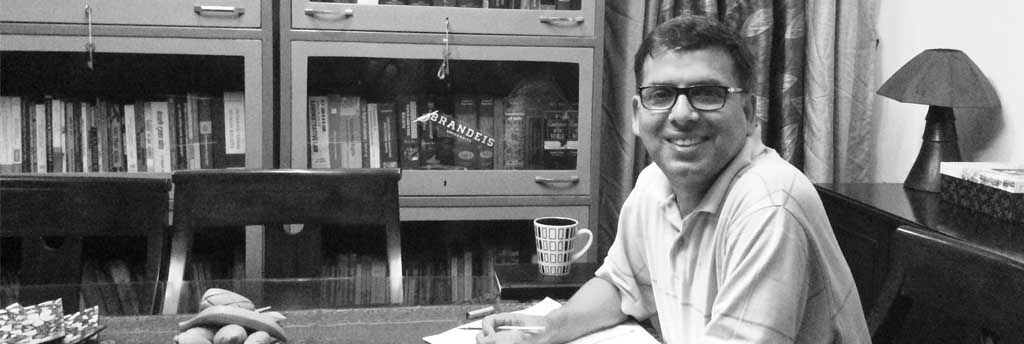
(This is excerpt of opening remarks given by Dr Bipin Adhikari as Chairperson of Nepal Constitution Foundation at the bill review programme on the Bill of Contempt of Court Act, 2067 (2011) organised on January 19, 2012 in Kathmandu)
The Bill of the Contempt of Court Act 2067 is the first of its kind in Nepal. Traditionally, the law on contempt has been based on the precedents established by the Supreme Court, and the government never thought of introducing any legislation in this regard the way many other common law countries in the world have done to deal with the person held in contempt. It is good that the Bill has now been registered with the parliament, and is on the queue to be introduced in the House.
In British common law jurisdiction, the law on contempt is partly set out in case law, and partly specified in the Contempt of Court Act 1981. As a matter of principle, the contempt of court order enables the court in most of the jurisdictions to declare contemnor to a person or organization which have disobeyed or been disrespectful of the court’s authority in the context of a court trial or hearing. Often referred to simply as “contempt,” it is the judge’s strongest power to impose sanctions for acts which disrupt the court’s normal process. A finding of contempt of court may result from a failure to obey a lawful order of a court, showing disrespect for the judge, disruption of the proceedings through poor behaviour, or publication of material deemed likely to jeopardize a fair trial.
This Bill has been drafted with the intention to make judicial process clean, unbiased and effective, to promote the faith of the people in the judiciary, and to control acts undermining the prestige of the judiciary. Section 3 of the Bill empowers the court to – conduct contempt proceedings and punish the people found guilty. Section 6 provides that a judge may also be held in contempt of the court. “Court” is defined in Section 2(a) meaning the Supreme Court, the Appellate Court and the District Court or any other judicial institution legally enabled to conduct contempt proceedings.
Section 4 provides the acts which amount to contempt of the court. These acts include – interrupting judicial process or the enforcement of court’s decisions or refusing to enforce its decisions or causing delay in the enforcement; causing undue influence over the court in a matter sub judice, undermining the prestige of the court or defamation of the court; defamation or physical or disrespectful behaviour against the judge; entering a closed session of the court without permission; publishing materials restricted by the court, etc.
Section 5 provides the acts that do not amount to the contempt of court notwithstanding the provisions of Section 4. These acts include – expressing dissatisfaction over the procedure or decision of the court for legal remedy or criticism of the court’s procedure or decision in a polite manner; bringing out the facts of a matter sub judice to assist the court or publishing the decision or facts of the case other than those required to be kept confidential by law; arguing in a civil manner in a court matter regarding the character of a judge; publishing a valid critique of any legal principle used by the court, etc.
Section 7 provides that any person who has been aggrieved by the absence of or deliberate delay in the enforcement of a court’s decision or order may apply for contempt proceedings in the related court. In other cases of contempt, anyone can file such proceedings. In case of a district court judge the contempt application must be filed in the Appellate Court and in case of Appellate court judge and Supreme Court judge, it must be filed in the Supreme Court. All such applications require legal basis and evidence. Section 8 provides the cases in which, notwithstanding Section 7, the court may itself initiate proceedings for contempt of court and record the statements of the accused if they are present in the court. These cases include – when the judge in bench witnesses any act in contempt of court, when the judge is notified to an act in contempt of court while it is in session and is satisfied of its validity, when the judge infers contemptuous act through materials in the case file.
According to Section 9 the court must provide seven days period for the accused under Section 7 and those not present in court with regard to Section 8, to present their reply to the charge. Section 11(2) provides that if there are reasons to believe that the accused may abscond, the court may order for the accused to be placed in custody. Section 12 provides for a quick disposal of the case.
Section 13 provides for the punishment of up to one year of imprisonment, or fine up to Rs ten thousand, or both, or other measures as the court deems fit. According to Section 14 the court may grant pardon, reduce or suspend or change its sentence if the accused pleads unintentional offence or asks the court for pardon after or during the proceedings. Section 15 provides that only the offences that cause immediate, clear and serious damage to the prestige of the judiciary shall be punished. Section 16 states that no appeal can be made of the decision of the court under Section 14 granting pardon, reducing or suspending or changing its sentence. According to Section 19 the court may ask Nepal Bar Association for an advocate to act as amicus curiae keeping in mind the nature of the case. It can also take the help of the government attorneys, if needed.
The attempt to legislate a separate act on contempt of court must be taken in a positive manner. However improvements are necessary for the act to be both judicial and effective. It has been observed that the courts in Nepal have not considered all the aspects of contempt while making decision regarding this topic. The definition of contempt in Section 4 is unable to clarity on the various types of contemptuous acts that are recognized in the broader legal system. With regard to the mode, contempt can be divided into two categories – direct and indirect. With regard to the action, contempt can be divided into two categories – civil and criminal.
Civil contempt consists of disobeying the court’s order in a manner that an individual is aggrieved. Criminal contempt consists of offence against the court itself and the prestige of the judiciary. Civil contempt can be remedied if the individual is satisfied but criminal contempt leaves a long lasting damage upon the image of the judiciary. It is seen that this Bill does not make a clear distinction between such categories in terms of punishing the offences though Section 7 provides in case of civil contempt the aggrieved person can file for such proceedings and in case of criminal contempt, anyone can file for contempt proceedings. Section 13 needs to provide degrees of punishment with regard to the seriousness of the offence.
Direct or in facia curiae contempt occurs inside the court and is witnessed by the bench. This is addressed by Section 8(1). Indirect contempt occurs outside the court. It consists of bribing advocates or witnesses, or publishing defamatory material. This Bill does not make clear distinction between direct or indirect contempt. It would have been better to divide such offences between different sections and prescribing separate punishments for them. Presently the Bill puts too much discretion upon the judges regarding punishment by not distinguishing between the punishment suited to the nature of the offence and by only prescribing the maximum punishment.
There are some other issues as well. In Canada contempt of court includes offence from the court officials. In Hong Kong taking pictures and recording court proceedings without permission is also prohibited. The mental element is a considerable factor in determining this offence. Offence without the intention is normally treated with lesser punishment. The exception to this is Britain where contempt of court attracts strict liability. Section 14 gives the discretion to the court to grant pardon or reduce sentence, or commute or change it. But it is based on the apologies or plea of innocence given by the accused and not on the mental element of the accused while committing the offence. Therefore the Bill should be clear on these aspects.
According to Section 17, if the offences under this Act can be prosecuted under other prevailing laws then this Act shall not obstruct such proceedings. This can violate the constitutional principle of double jeopardy. The definition of court under Section 2(a) is wide enough to include various tribunals and investigative commissions. It is noteworthy that such quasi judicial institutions are not empowered for judicial administration but their duty is to provide recommendations and conduct investigations. Such institutions are often established under some political context. Therefore the law of defamation should be employed in such cases rather than the law of contempt.
It is also noteworthy that there have been criticisms of the practice in cases related to contempt of court where the judge is empowered to find the accused guilty and also decide the punishment. It can be argued that this violates the principle of natural justice whereby one cannot be a judge of his own cause. Therefore decision on contempt of court will be unbiased if it is taken by another bench or judge even though it is the same court. The Bill needs to make necessary changes to achieve a comprehensive stance on contempt of court and give out unbiased decision.


